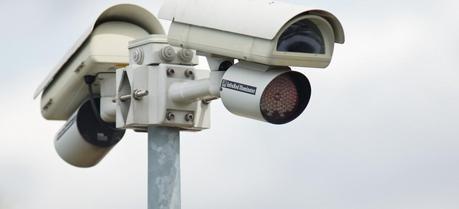 Ferroelectric compounds used in photodetectors can help to minimize electrical losses, facilitating a sensor and monitoring network that can go ‘off the grid’. (Credit: Flickr @ Frédéric BISSON https://www.flickr.com/photos/zigazou76/)
Ferroelectric compounds used in photodetectors can help to minimize electrical losses, facilitating a sensor and monitoring network that can go ‘off the grid’. (Credit: Flickr @ Frédéric BISSON https://www.flickr.com/photos/zigazou76/)Kui Yao and colleagues from the A*STAR Institute of Materials Research and Engineering in Singapore have developed a battery-less photodetector that can harvest small quantities of detected light to generate enough energy to power a sensing signal transmission through a radio-frequency transmitter.
While the energy contained in a beam of light can be converted into electricity, this energy is not usually sufficient to continuously power an electrical circuit. Even the use of batteries to power a circuit is impractical in many circumstances, explains Yao. “Use of photosensors may take place under extremely harsh conditions intolerable to batteries, or involve environmental monitoring network systems where it may be too expensive or unrealistic to maintain batteries for each sensor.”
Operating an electrical circuit under low-power circumstances requires a buildup of energy, which must be generated by the photodetector. However, commonly used photodetector materials, which are based on semiconductors, lose too much energy for this to occur. “Conventional photodetectors can’t accumulate the minute photovoltaic energy and then harness it to drive a load in a sustainable manner,” explains Yao.
To overcome such energy losses, Yao and colleagues developed battery-less photodetectors made from ferroelectric compounds. These insulating materials can separate electrical charges as well as store them with low losses. Ferroelectric detectors can also generate a larger electrical voltage than semiconductors, making it easier for them to power other electrical components.
The researchers connected their ferroelectric detector to a specially designed electrical circuit, which is mechanically opened and closed by a switch in the form of a piezoelectric cantilever. Any generated electricity is temporarily stored in the ferroelectric detector and a capacitor. Once the electrical charge of the capacitor is sufficiently high, the cantilever changes its shape and closes the electrical circuit. This activates a radio transmitter.
So far, the team’s main challenge in developing the device has been to minimize electrical losses. Remarkably, Yao and his team have shown that almost 70 per cent of the accumulated electrical charge can be retrieved from the capacitor—even ten minutes after the light source has been switched off. This advantage provides the team’s battery-less photodetector with the potential for use in a wide range of applications, such as wireless optical sensors and monitoring networks.
Lai, S., Yao, K., & Chen, Y. (2013). A battery-less photo-detector enabled with simultaneous ferroelectric sensing and energy harnessing mechanism Applied Physics Letters, 103 (9) DOI: 10.1063/1.4819845
